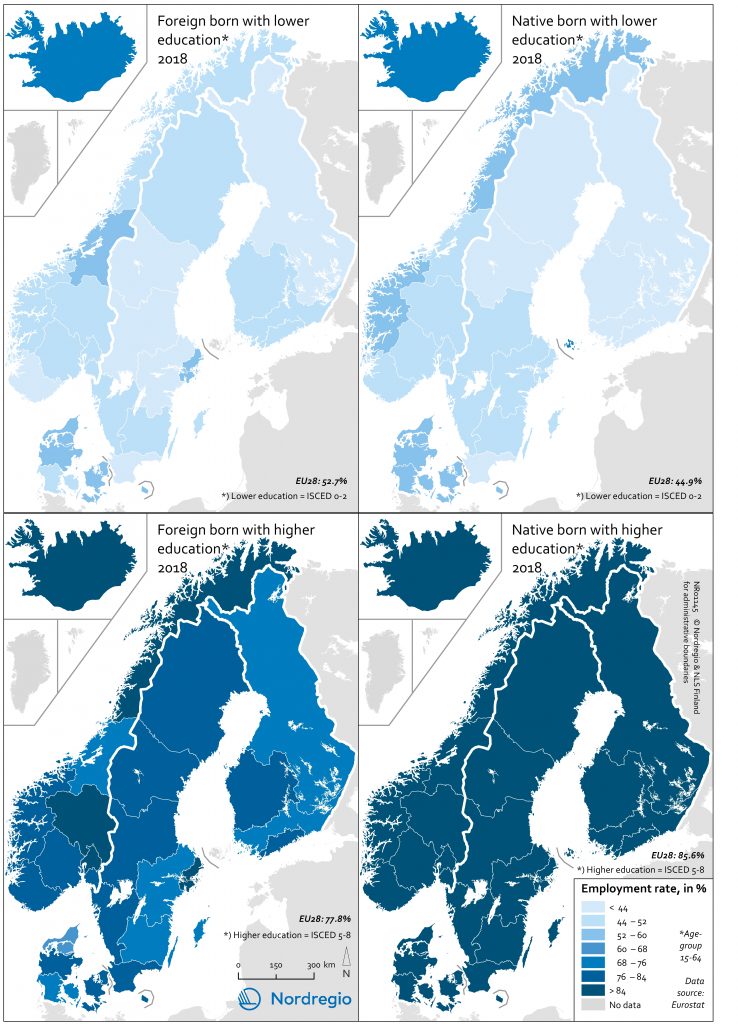The map shows employment rates of the native and the foreign-born population in different Nordic regions (NUTS 2 level).
Distinctions are made between foreign-born and native-born individuals with low educational achievements (ISCED levels 0-2: lower secondary education or below; upper left and right panels); and their peers with high levels of educational attainment (ISCED levels 5-8: tertiary/ university-level education; lower left and right panels).15 The panels show that higher education facilitates entry into the labour market. Across all regions shown on the map, native-born persons with high educational attainment had higher employment rates than native-born persons with lower education. Similarly, highly educated foreign-born persons were more likely to be employed than their lower-educated peers. The advantage of persons with high educational attainment also holds when comparing highly educated foreign-born persons with lower educated native-born persons. Across the Nordic Region, the latter group overall had lower employment rates than the former.

When comparing employment rates within each educational group, further interesting patterns emerge. Among the higher educated group (lower panels), employment rates of native-born persons were generally higher than those of foreign-born persons in 2018. In Iceland, and the regions of Stockholm in Sweden and Oslo og Akershus, Hedmark og Oppland and Nord-Norge in Norway, both groups of highly educated persons reached employment levels of 84 percent or higher. By contrast, among the lower educated group (upper panels), foreign-born persons reached higher employment levels than native-born persons in a few regions, most notably around the capitals Helsinki and Stockholm and other Finnish regions as well as Trøndelag in Norway. In at least some Nordic regions, it appears that lower-educated migrants are more willing or able to take on employment than their native-born peers. These exceptions notwithstanding, lower-educated native-born individuals reached similar or higher employment rates than their foreign-born peers in 2018 in most Nordic regions.

